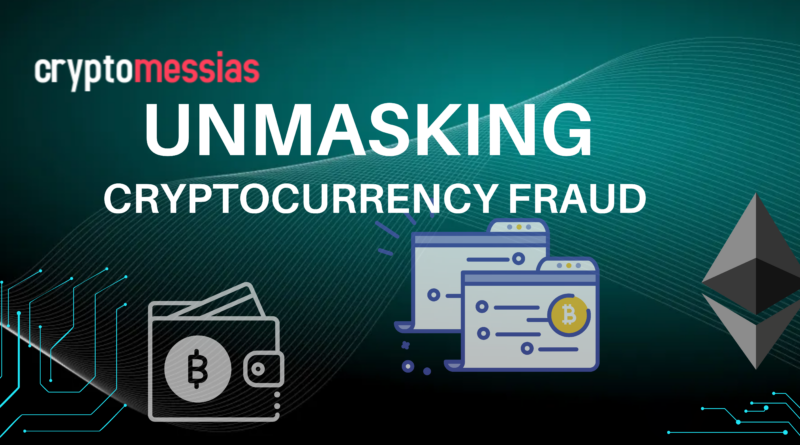Unmasking Cryptocurrency Fraud: Causes, Consequences, and Prevention Strategies
In the digital age, cryptocurrency has become an extreme financial tool, promising decentralized and transparent marketing. However, this innovative technology has also attracted a darker side – cryptocurrency fraud. The rapid growth of the crypto market has unfortunately been accompanied by a surge in fraudulent activities, posing significant risks to investors and the industry as a whole. Understanding the reasons and impacts of cryptocurrency fraud is important for both conceivable investors and industry stakeholders. The underlying causes explore the wide-ranging consequences and offer strategies to mitigate these risks.
Causes of Cryptocurrency Fraud
1. Lack of Regulation and Oversight
One of the primary causes of cryptocurrency fraud is the relatively unregulated nature of the market. Unlike traditional financial systems, which are subject to stringent regulations and oversight, the cryptocurrency space is still evolving. This regulatory gap creates opportunities for fraudsters to exploit vulnerabilities and engage in deceptive practices without fear of significant repercussions.
2. Anonymity and Privacy
Cryptocurrencies offer a level of anonymity that, while appealing to legitimate users, also attracts malicious actors. The pseudonymous nature of transactions on blockchain networks means that fraudsters can operate with a degree of secrecy, making it challenging for authorities to trace and prosecute them effectively.
3. Complexity and Technical Challenges
The technical complexity of cryptocurrency and blockchain technology can be a double-edged sword. While these technologies offer advanced security features, they also present barriers to understanding for many users. This lack of understanding can lead to poor decision-making and increased vulnerability to scams and fraudulent schemes.
4. High Volatility and Speculation
The high volatility and hypothetical nature of cryptocurrency markets can create a productive ground for fraud. Promises of quick, high returns can lure investors into schemes that are too good to be true. Scammers often exploit market hype and fear of missing out (FOMO) to attract victims.
5. Social Engineering and Phishing
Fraudsters often use social engineering tactics and phishing schemes to deceive users. By impersonating trusted entities or creating fake but convincing websites, scammers can trick individuals into divulging their private keys or login credentials, leading to the theft of funds.
Consequences of Cryptocurrency Fraud
1. Financial Losses
The most immediate development of cryptocurrency fraud is financial failure. Victims can lose significant amounts of money, sometimes entire life savings, due to fraudulent schemes. These losses can be particularly devastating because, unlike traditional financial institutions, cryptocurrency transactions are often irreversible.
2. Erosion of Trust
Fraud vandalizes the credibility and steadfastness of the crypto ecosystem. As high-profile scams and fraud cases make headlines, potential investors and users may become wary of participating in the market. This erosion of trust can restrict the mainstream adoption and evolution of cryptocurrencies.
3. Legal and Regulatory Repercussions
In response to the rising tide of fraud, regulators are increasingly scrutinizing the cryptocurrency industry. This scrutiny can lead to stricter regulations and compliance requirements, which may impact the operational freedom of legitimate businesses. Additionally, legal battles and regulatory actions can result in financial and reputational damage for companies involved in fraudulent activities.
4. Psychological Impact
The psychological toll on victims of cryptocurrency fraud can be severe. Beyond financial loss, individuals may experience stress, anxiety, and a sense of betrayal. The emotional impact can be long-lasting and affect personal and professional aspects of their lives.
5. Market Instability
Widespread fraud can contribute to overall market instability. Scandals and fraudulent activities can lead to sudden market downturns, increased volatility, and decreased investor confidence. This instability can affect not only individual investors but also the broader financial markets.
Prevention Strategies
1. Enhanced Regulation and Compliance
To combat cryptocurrency fraud, increased regulation and compliance measures are essential. Governments and regulatory bodies must develop and enforce robust frameworks to ensure transparency, protect investors, and hold fraudsters accountable.
2. Education and Awareness
Raising understanding and enlightening users about cryptocurrency threats is necessary. By providing clear information about how to identify and avoid scams, users can make more informed decisions and safeguard their investments.
3. Improved Security Measures
Both individuals and businesses should adopt advanced security measures to protect their cryptocurrency holdings. This includes utilizing hardware wallets, enabling two-factor authentication, and staying awake against phishing endeavors.
4. Due Diligence
Investors should conduct thorough due diligence before engaging with any cryptocurrency platform or investment opportunity. Verifying the legitimacy of projects and understanding the risks involved can help prevent falling victim to fraudulent schemes.
5. Collaboration and Reporting
Collaboration between industry stakeholders, law enforcement, and regulatory bodies is crucial for tackling cryptocurrency fraud. Reporting suspicious activities and cooperating with investigations can help track down and prosecute fraudsters.
Conclusion
Cryptocurrency fraud presents a significant challenge to the burgeoning digital asset industry. By understanding its causes and consequences, and by implementing effective prevention strategies, stakeholders can work towards a more secure and trustworthy cryptocurrency ecosystem. As the industry continues to evolve, ongoing efforts to enhance regulation, education, and security will be key in safeguarding the future of digital finance.

